Principal Investigator
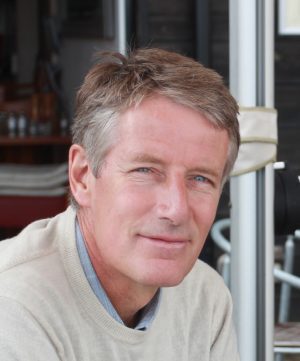
Peter Berg
My educational background is in civil engineering. As an undergraduate I focused on mechanical design and construction while my graduate work focused, broadly speaking, on applied mathematical modeling of transport processes and mass and energy flows. I earned my PhD degree in 1988 from the Technical University of Denmark. After that I worked at the Danish National Environmental Research Institute where I was responsible for long-term modeling of nitrogen leaching from agricultural land. In 1996, I relocated to the University of Virginia (UVA) and have since then focused my research on biogeochemical cycling in aquatic benthic environments.
A dominant approach in my work at UVA has been the use of applied mathematical modeling, which I have combined with the development of new measuring techniques and approaches. I see these two foci as highly complementary and powerful, and on a personal level I am very excited to apply them to address research questions focusing on the benthic environment.
From 2001 forward, I pioneered the aquatic eddy covariance technique for oxygen flux measurements in collaboration with the Max Planck Institute for Marine Microbiology, Germany. At first, this was a side project to my ongoing modeling activities, but given our first successes and the potential of the approach, it quickly became the main focus of my work. Today I work exclusively on the eddy covariance technique. As reflected in the publications from my lab group this work is focusing on further developing the technique, and also on applying it to benthic environments where traditional flux approaches are hard to use, and where our knowledge on benthic exchange is thus limited.
A link to my diagenetic modeling work, including download options for papers and the profile interpretation software, PROFILE, is given here.
Contact Information:
Email: pb8n@virginia.edu
Phone: 434-924-1318
Graduate Students
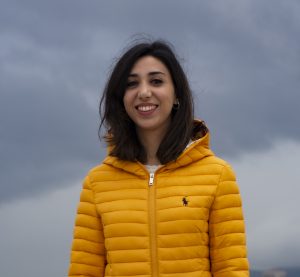
Mariña Amo-Seco
Ph.D Candidate
My PhD project focuses on ecosystem metabolism and its seasonal dynamics in different benthic habitats of the Ría de Vigo coastal upwelling system (NW Iberia, Spain). My overall goal is to determine the carbon sequestration capacity of these habitats. Ecosystem metabolism will be quantified from oxygen flux measurements using the Aquatic Eddy Covariance Technique. I am enrolled at the University of Vigo, Spain, with Carmen G. Castro (IIM –CSIC) and Peter Berg (University of Virginia) as advisors.
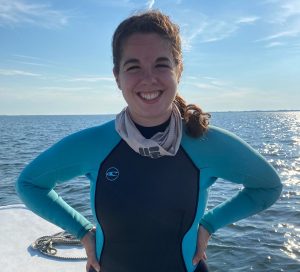
Kayleigh Granville
Ph.D Candidate and Virginia Sea Grant Graduate Research Fellow
I am broadly interested in greenhouse gas flux dynamics and their effect on carbon sequestration in blue carbon ecosystems. My current research primarily focuses on identifying temporal and diurnal patterns in air-water CO2 and CH4 fluxes over temperate seagrass meadows at the Virginia Coast Reserve LTER. My Ph.D. research has also focused on seagrass meadow ecosystem metabolism and best practices for evaluating new oxygen meters for aquatic eddy covariance.
Email: keg8fb@virginia.edu
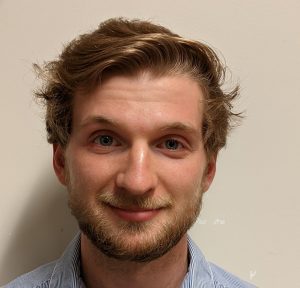
Luke Groff
Ph.D. Student
I am interested in investigating the role of coastal carbon sinks to combat climate change and ocean acidification, and improving the state of public faith in science to guide behavior and legislation towards less dire future outcomes. I am co-advised by Dr. Karen McGlathery (UVA).
Email: hmq2xm@virginia.edu
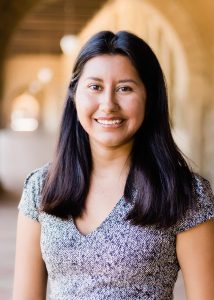
Paola Granados
Ph.D. Student
I am interested in researching carbon cycling and greenhouse gas fluxes within
seagrass meadows to better understand the carbon storage potential of coastal
blue carbon ecosystems.
Email: xac4ke@virginia.edu
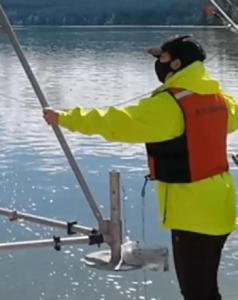
Adrienne Chan
Ph.D. Student, NSF Graduate Research Fellow, and ARCS Oregon Scholar
My PhD research uses early diagenetic models to simulate iron cycling in Oregon continental margin sediments. I will be applying these models to assess how
fluxes may change with changing bottom water conditions and sediment mixing that
may occur due to shifts in benthic community structure or from human activity. I am enrolled at Oregon State University and co-advised by Dr. Clare E. Reimers (OSU).
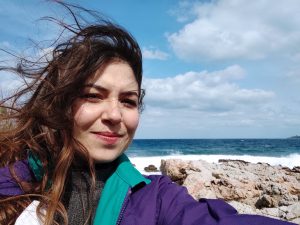
Ana Maria Botero Angel
Ph.D. Student
My project focuses on ecosystem multifunctionality of seagrass meadows in relation to their habitat complexity in the Mediterranean. Ecosystem metabolism will be quantified from oxygen flux measurements using the aquatic eddy covariance technique. I am enrolled at the University of Palermo, Italy, and advised by Professor Gianluca Sara (University of Palermo) and Research Professor Peter Berg (University of Virginia).
Undergraduate Students

Renee Hebert
NSF REU student and Distinguished Majors Program (DMP) student
My research focuses on coastal carbon sinks. In particular, I use sediment analysis to study seagrass meadows and their role in long-term carbon sequestration.

Connor Doreen
Distinguished Majors Program (DMP) student
My research focuses on using underwater soundscapes to study biochemical
processes in coastal ecosystems.
Alumni
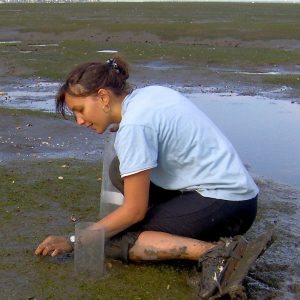
Marie Lise Delgard
Former post doctoral scholar
My research focuses on the dynamic of major biogenic elements in coastal zones and on the interactions between macrophytes and biogeochemical cycles in these environments. During my masters degree, I carried out an in situ study on biogeochemical dynamics of redox species (O2, Fe2+, HS–, Fe3+ and FeS(aq)) in permeable sediments on tidal scales using in situ voltammetry. My PhD project focused on the influence of seagrass on the cycles of biogenic elements such as O2, C, N and P. Part of this work was about the spatio-temporal dynamic of seagrass meadow metabolism (measured by ex situ core incubations) in relation to changes in the distributions of macrophytes and macrofauna. I also studied the impact of seagrass regression on the nutrient biogeochemistry in sediments of a coastal lagoon.
During my Post Doc position, I quantified seagrass metabolism and its dynamics on hourly to seasonal time scales using the aquatic eddy covariance technique. During my Post Doc, I quantified seagrass metabolism and its dynamics on hourly to seasonal time scales using the aquatic eddy covariance technique. In some of the intensive field campaigns I included high temporal resolutions pCO2 measurements to investigate if naturally varying CO2 and O2 concentrations in the water column exert any control of seagrass production. The field study did not support the notion that seagrass meadows may be ‘winners’ in future oceans with elevated CO2 concentrations and more frequent temperature extremes.
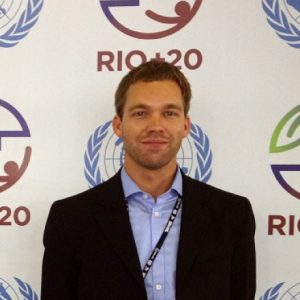
Andrew Hume
Former MS student – graduated in May 2008
My graduate thesis research focused on biogeochemical cycling and hydrodynamics of recovering seagrass meadows on the Eastern Shore of Virginia. Specifically, Dr. Berg and I adapted the micrometeorological concept of eddy-covariance to measure fluctuations of dissolved oxygen in order to determine ecosystem metabolism dynamics of seagrasses. As a graduate research student for Dr. Berg, I was lucky to participate in multiple research cruises and field campaigns around the globe. After graduating from UVa, I accepted a research assistant position at the Scottish Association for Marine Science in Oban, Scotland where I set up an aquatic eddy-covariance lab. Upon moving back to the United States, I decided to apply my educational background to marine policy and conservation.
Current location: Stanford University
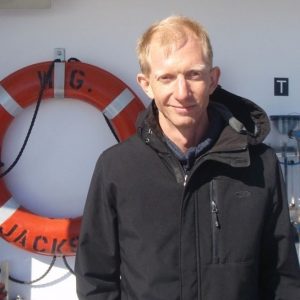
Dirk Koopmans
Former Ph.D student – graduated in August 2013
While the drivers of metabolism in aquatic ecosystems are well known and include nutrients, sunlight, temperature, organic matter inputs, and water flow or mixing, our ability to quantify the effects of these drivers on metabolism is limited. This limits our understanding of the impacts of these drivers on water quality and aquatic carbon transformation. My research focused on a novel hydrodynamic technique, eddy covariance, which can be used to determine the flux of oxygen, heat, and salt in an aquatic ecosystem at a high temporal resolution and without a gas transfer velocity correction. The calculated fluxes which result can improve our predictions of an aquatic ecosystem’s response to environmental change.
An abundant source of nutrients to freshwater and shallow marine ecosystems is groundwater. Because over-enrichment of surface waters with nutrients leads to water quality degradation and habitat loss, I have also worked with seepage meters, radioisotopic tracers, thermal imagery, and salt and heat fluxes calculated with the eddy covariance technique to quantify sources of groundwater discharge to surface waters. The delivery of groundwater nutrients to surface water at some locations is controlled by microbial activity in sediments. By improving our understanding of these processes we can improve the application of our effort to preserving water quality and aquatic habitats.
Former Location: School of Freshwater Sciences, University of Wisconsin-Milwaukee.
Current Location: Max Planck Institute for Marine Microbiology, Bremen, Germany.
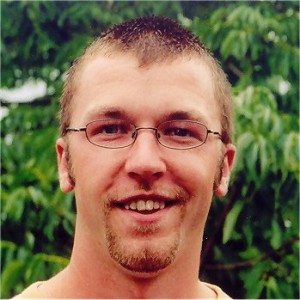
Matthew Long
Former Ph.D student – graduated in May 2013
My research focused on coastal biogeochemistry and how natural and anthropogenic processes influence benthic carbon and nutrient cycling. These topics are important because human activities are rapidly altering these processes and the long-term effects of these changes are largely unknown. Because a large portion of the human population lives adjacent to the coast, we are tightly linked to the productivity and stability of coastal systems, and their ability to mitigate anthropogenic changes.
I used the aquatic eddy covariance technique to investigate the in-situ factors that control carbon cycling such as: nutrients, irradiance, benthic communities, waves, and currents. My PhD work was primarily on tropical coral reefs and seagrass meadows in south Florida. These results revealed the complex interactions of hydrodynamics with productivity, the tight link to irradiance, and complex benthic communities that efficiently harvest light to create linear photosynthesis to irradiance curves. My results also showed the importance of sampling in-situ over large spatial scales as these effects are not able to be observed with any other methodology. Further, these measurements showed extremely high production rates on coral reefs and why these areas are hotspots of biodiversity while being a large source of production for the surrounding areas.
Current Location: Woods Hole Oceanographic Institution.
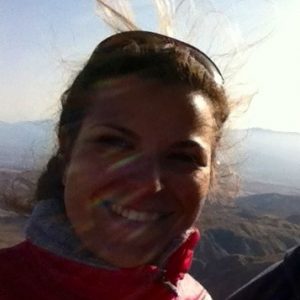
Jennie Rheuban
Former MS student – graduated in May 2013
I am interested in carbon dynamics in shallow coastal systems and how carbon cycling changes with a large scale ecosystem state change. My MS research focused on using oxygen as a proxy for carbon metabolism at different stages of seagrass colonization in the shallow lagoons of the VCR-LTER. I used the aquatic eddy covariance technique to measure real time ecosystem metabolism throughout the year to observe seasonal variability in the ecosystem response to light, temperature, and flow.
Current Location: Woods Hole Oceanographic Institution.
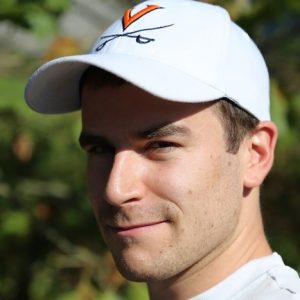
Martin Volaric
Former Ph.D student – graduated in May 2020
My research focused primarily on the ecology of oyster reefs in the shallow lagoons of the VCR-LTER. I used the eddy covariance technique to measure oyster metabolism in response to a variety of environmental and ecological factors, measuring the success of current oyster restoration efforts as well as quantifying important factors for future reef restoration.
Current Location: Stanford University
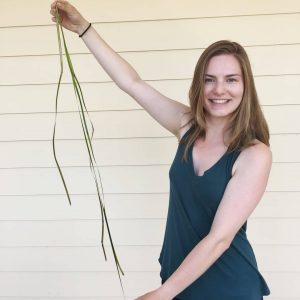
Amelie Berger
Former Ph.D student – graduated in May 2021
My research focuses on the ecology of seagrass meadows in the shallow coastal bays of the VCR-LTER. I am using the aquatic eddy covariance technique to quantify whole-system metabolism in a seagrass meadow during its recovery from a die-off event that occurred in summer 2015. My goals are to study the long-term trends and drivers of seagrass metabolism on multiple timescales, the impacts of seagrass loss and recovery on ecosystem-scale metabolism, and the trophic status of the meadow over the past 11 years. I am also studying the effects of high temperatures and sulfide toxicity on seagrass stress and mortality.
Current Location: Interim Site Director at the VCR-LTER
Email: acb4rk@virginia.edu
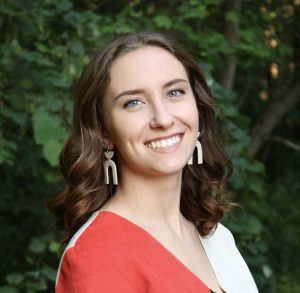
Ieva Juska
Former M.S. student – graduated in January 2022
My research focuses on non-dissolved oxygen, carbon dioxide, and methane gas in the water column in seagrass meadows of the VCR-LTER.
Current Location: Senior Project Manager at MBDC
Email: ij7tt@virginia.edu
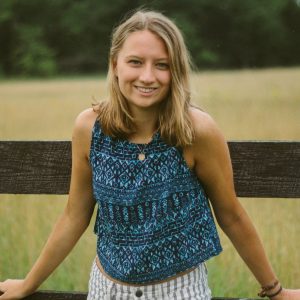
Kylor Kerns
Former REU student and undergraduate researcher (Distinguished Majors Program) – graduated May 2019
My research focused on water column and sediment temperature stratification in a seagrass meadow at the VCR-LTER. I also evaluated spatial differences in seagrass productivity throughout the meadow.
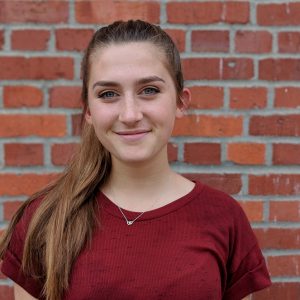
Sarah Cox
Former REU student – summer 2019
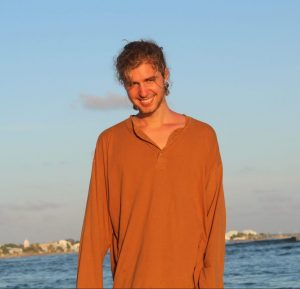
Davis Coffey
Former REU student and undergraduate researcher (Distinguished Majors Program and Harrison Award recipient) – graduated May 2022
My research focuses on using underwater soundscapes to study biological and physical processes in coastal ecosystems.